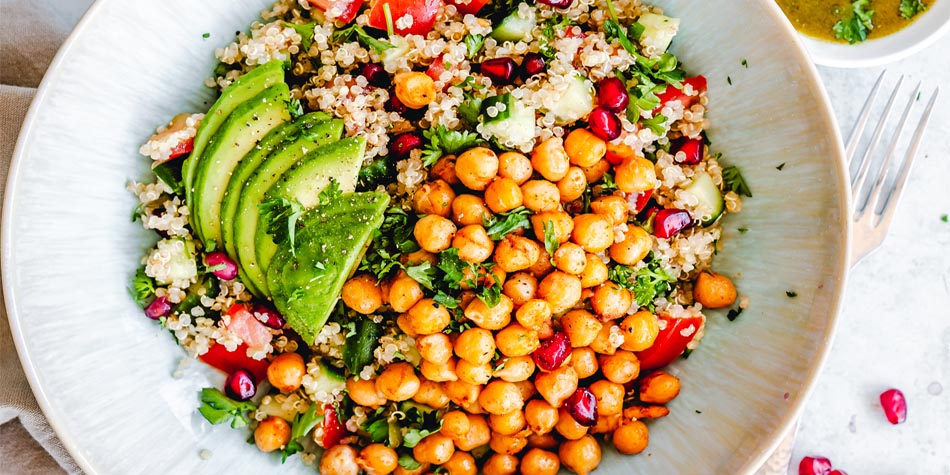
Dietary fiber sounds about as appetizing as cardboard. But don't be fooled. In fact, fiber is a key nutrient in appetizing foods like pears, broccoli, carrots, squash, black beans and more. With so many favorite foods containing fiber, you may be surprised to learn that at least half of Americans come up well short of U.S. Dietary Guidelines, which recommend 38 grams of fiber for men and 25 grams for women.
If you're like most of us, you probably need more fiber to keep your heart and gut healthy. A diet higher in fiber can also lower your risk of type 2 diabetes, kidney stones and cancers of the breast and colon.
Be fiber aware
There are two basic types of fiber—soluble and insoluble. You need both, but for different reasons. Soluble fiber, which abounds in foods like oats, peas, beans, carrots, apples and oranges, dissolves in water and forms a thick gel in your digestive system. This gel slows or prevents the absorption of sugars and fats, which can help control diabetes and reduce cholesterol. Soluble fiber also feeds the good bacteria in your gut.
Insoluble fiber is abundant in nuts, beans, potatoes, cauliflower, greens and whole–wheat flour. This type of fiber adds bulk and softness to the stool, speeding the passage of waste through your body and preventing constipation.
Eating a variety of plant–based foods is the best way to up your fiber game, but take it slow. Boosting fiber intake too quickly can lead to digestive woes like constipation and gas. Work in a few extra grams every week and drink lots of water while your body is adjusting.
Five ways to fiber up
- Have whole grains for breakfast. Skip bacon and eggs in favor of oatmeal or whole–grain cereal. Triple the fiber by adding berries, nuts, flaxseeds or chia seeds, which contain 2–5 grams of fiber per tablespoon.
- Nosh on fruits and veggies. Spread apple slices with nut butter or dip baby carrots in hummus, which contains 6 grams of fiber per serving. Leave the skin on fruits and veggies for more roughage.
- Have salad for an appetizer. Leafy greens like spinach and kale are good fiber sources, and eating them before meals may help you consume fewer calories. Add tomatoes, beets or half an avocado for 2-5 extra grams of fiber.
- Eat more beans. One cup of cooked beans delivers most of your daily fiber needs. Black beans, kidney beans and chickpeas are easy to add to salads, soups, stews and casseroles.
- Swap in whole grains. Replace a portion of regular flour with whole–wheat flour when making muffins, breads or baked treats. Substitute brown rice or quinoa for white rice and try pastas made with whole grains.
Fiber on the go
If you eat out frequently, getting enough fiber can be tough. These tips can help:
- Choose a baked potato with skin instead of fries.
- Order salad or vegetable soup as an appetizer or main course.
- Look for fiber–rich sides like beans or steamed veggies.
- Ask for whole–grain bread or tortillas for sandwiches and wraps. Or replace bread with lettuce.
- Keep high–fiber snacks on hand. Nuts and trail mix keep well in your car.
Can you eat too much fiber?
Yes, if you suddenly start eating more fiber, you can experience distressing symptoms like gas and constipation. If you have Crohn's disease, irritable bowel syndrome (IBS) or similar conditions, you may do better on a diet that's low in certain types of fiber. Ask your doctor about the best diet for you.